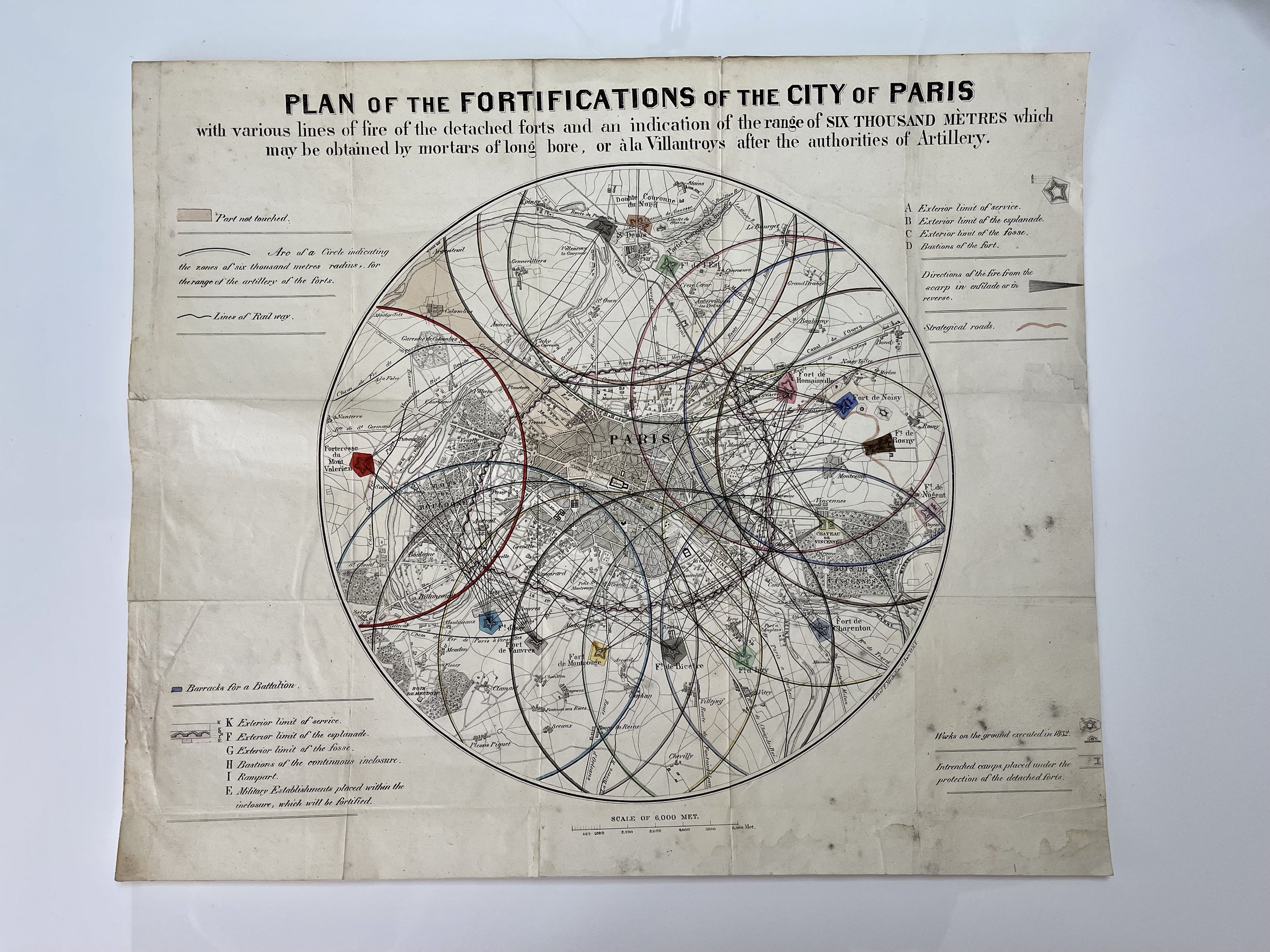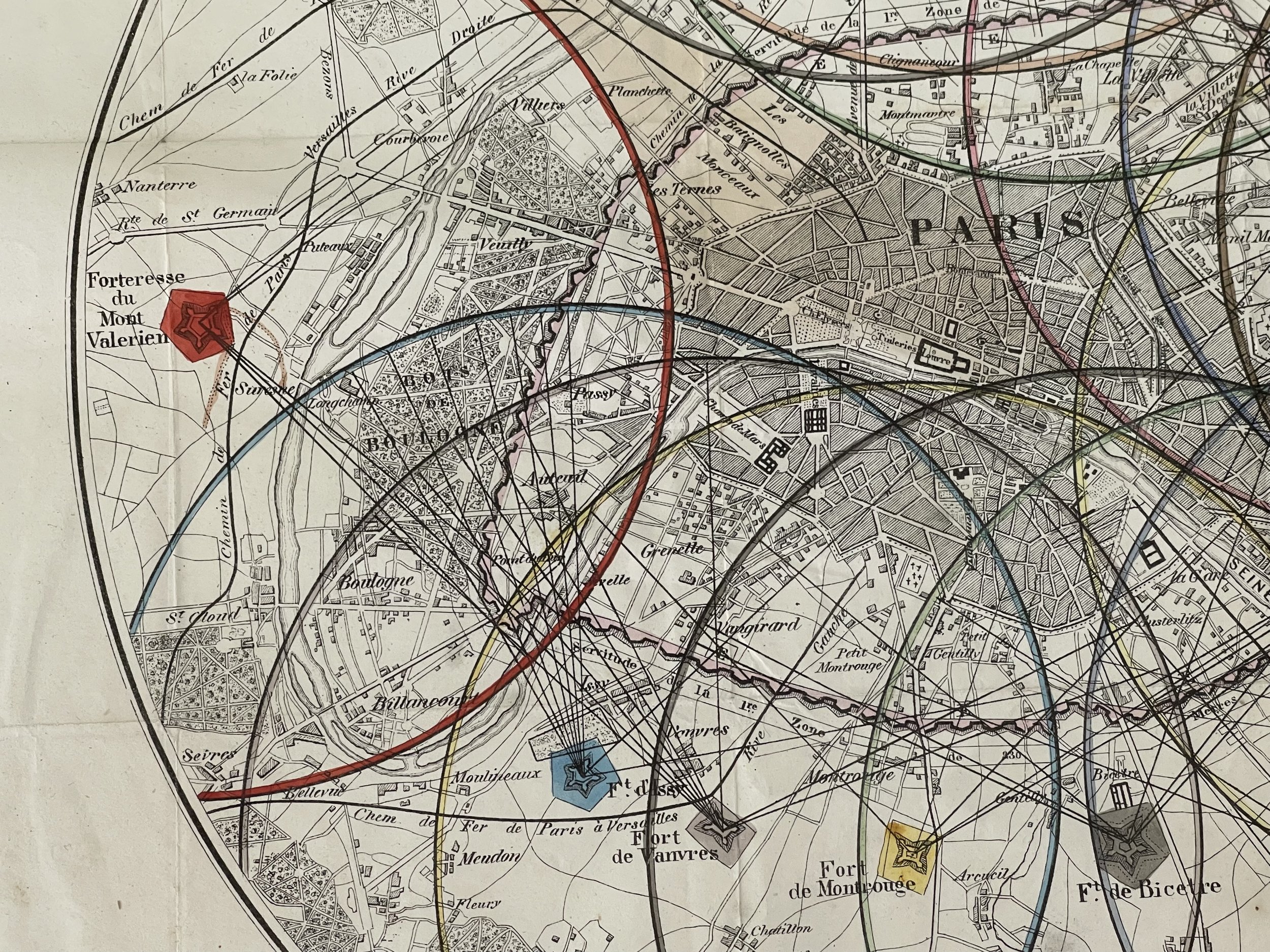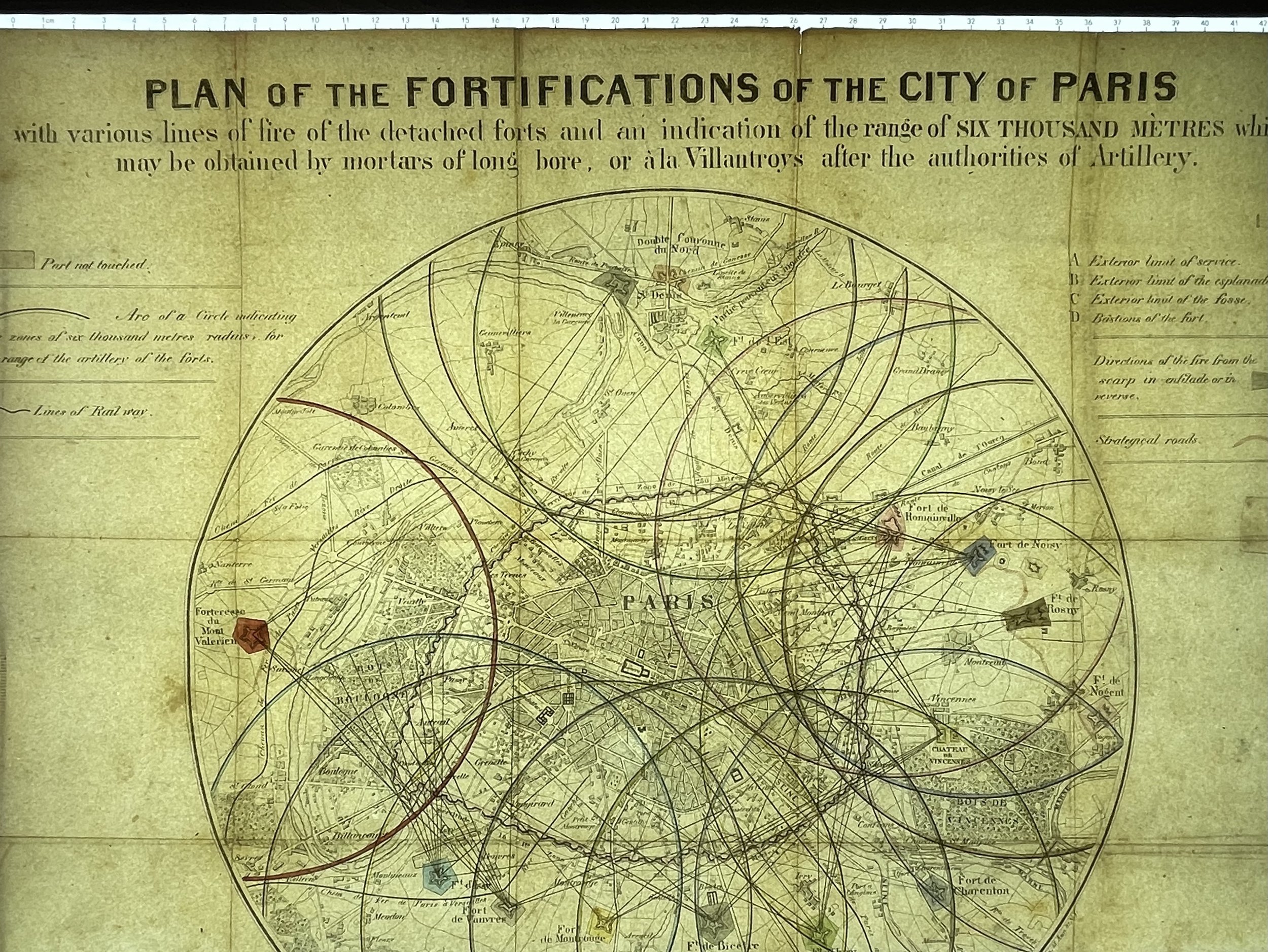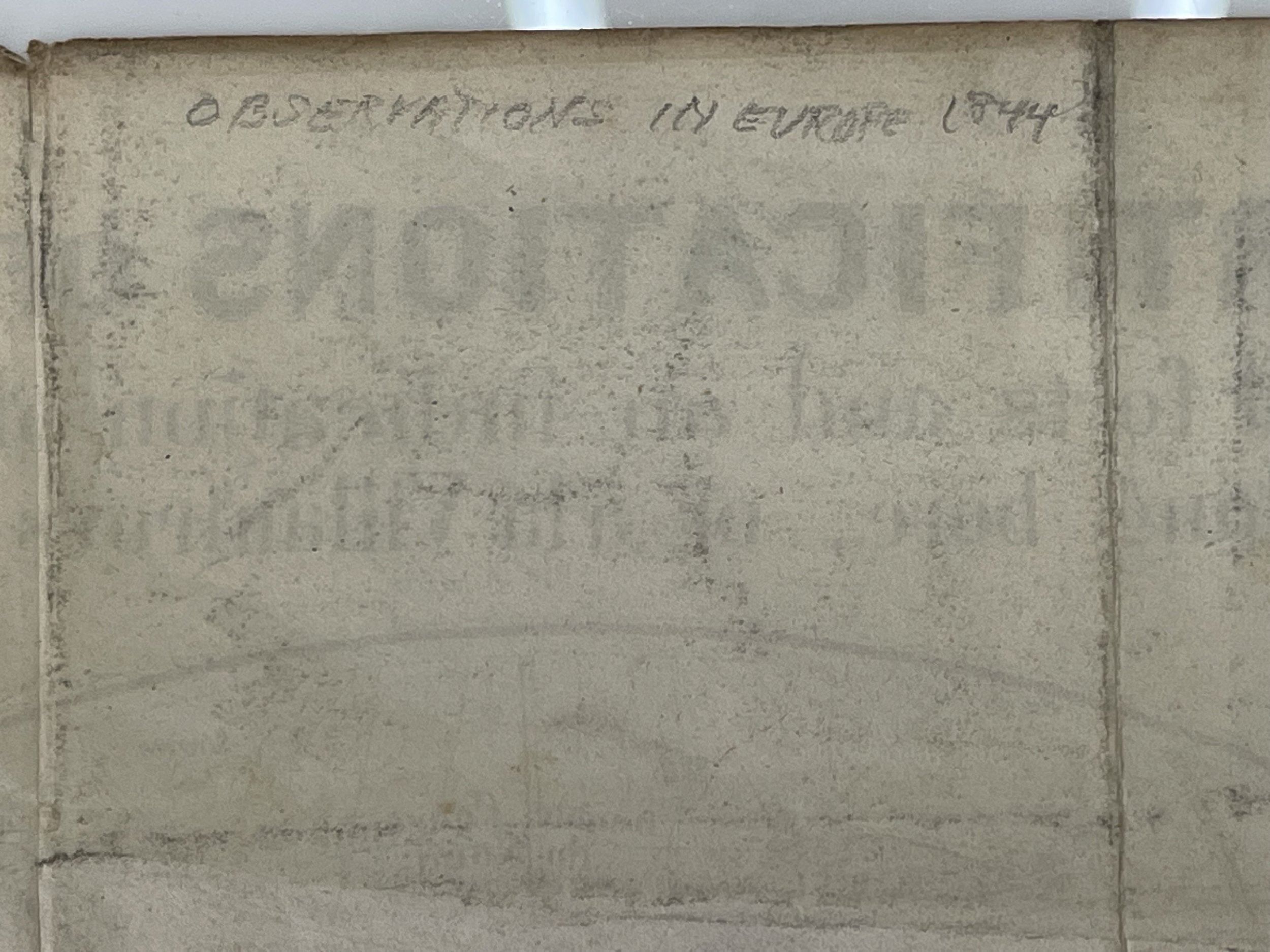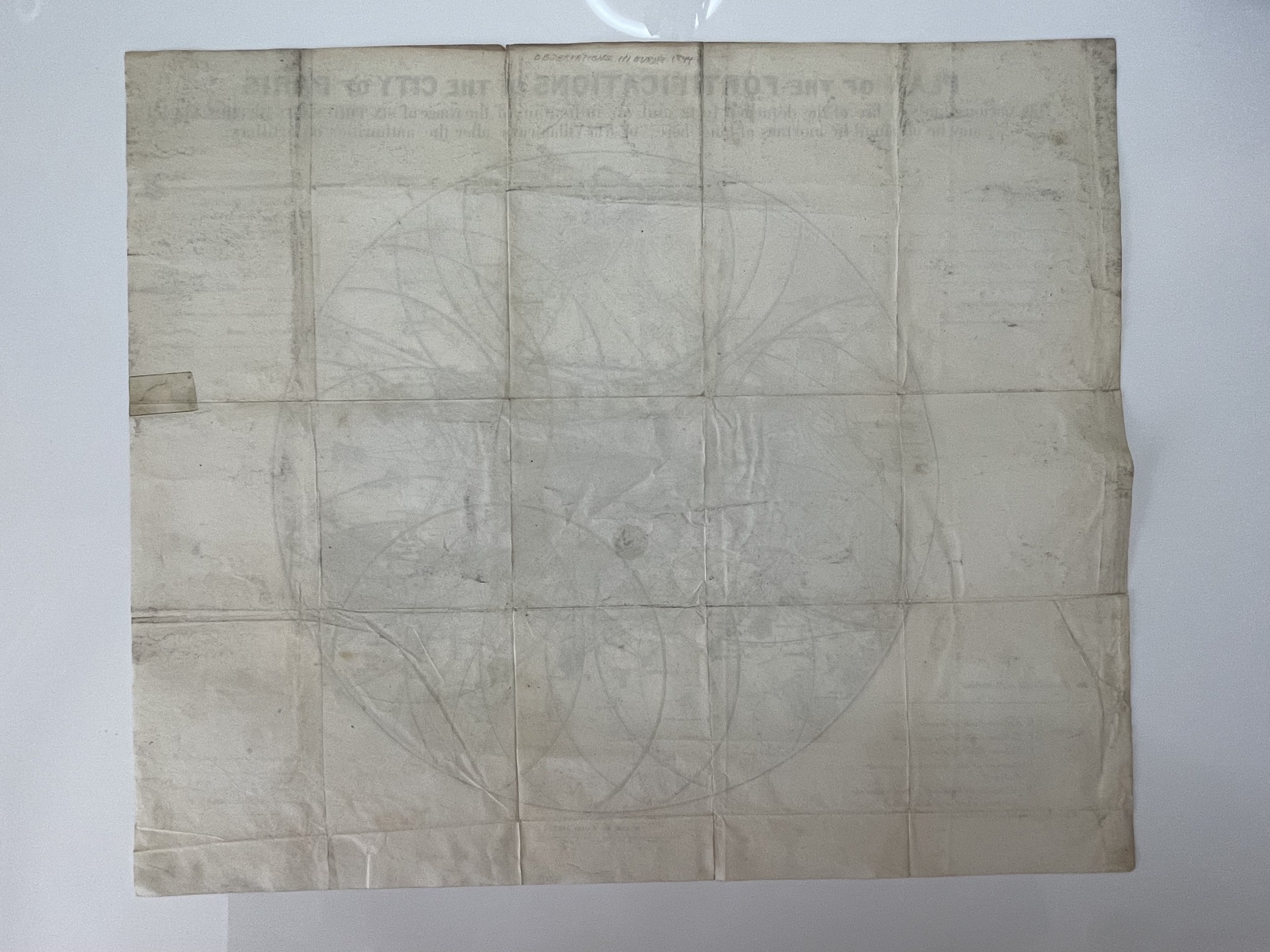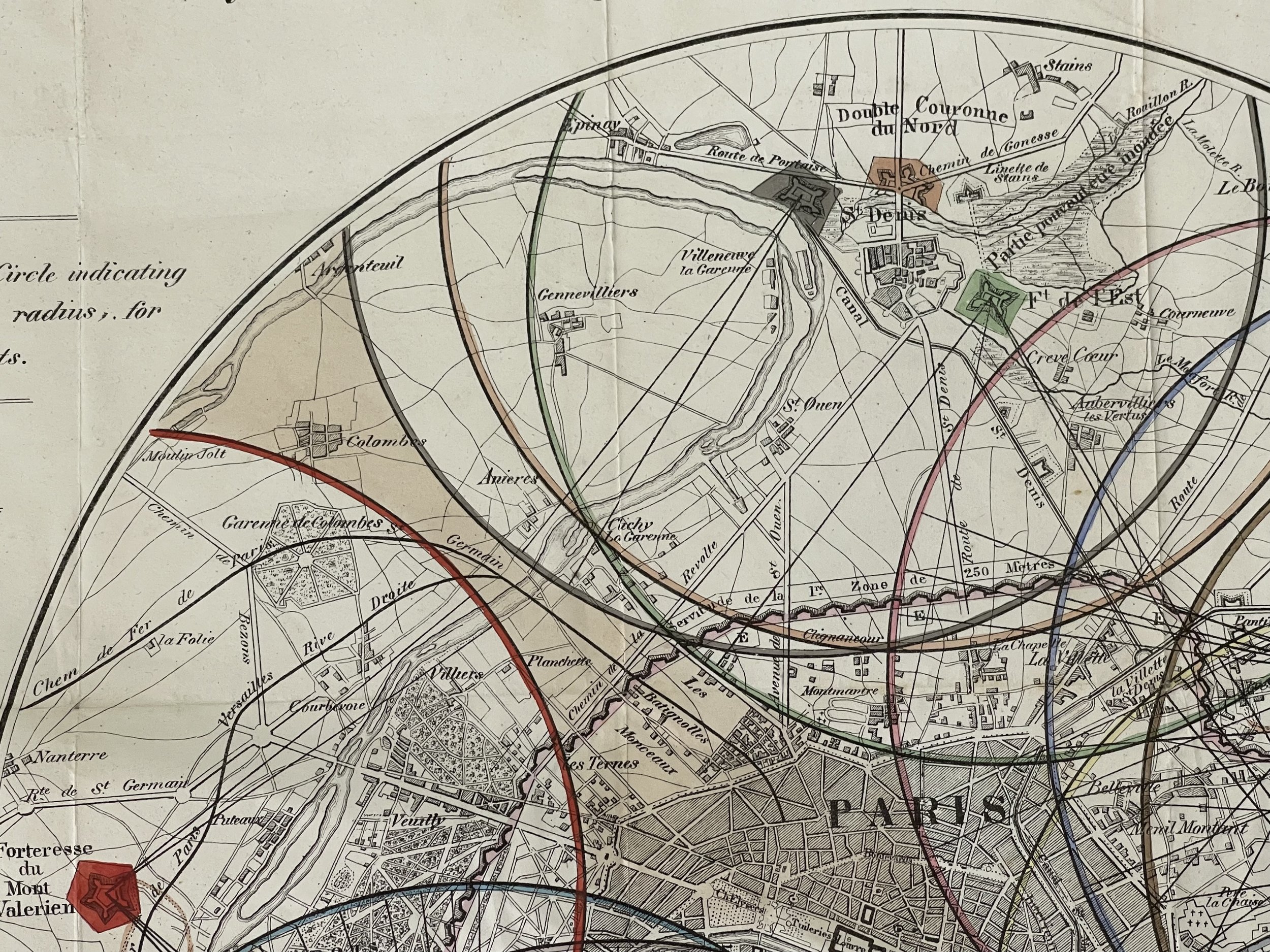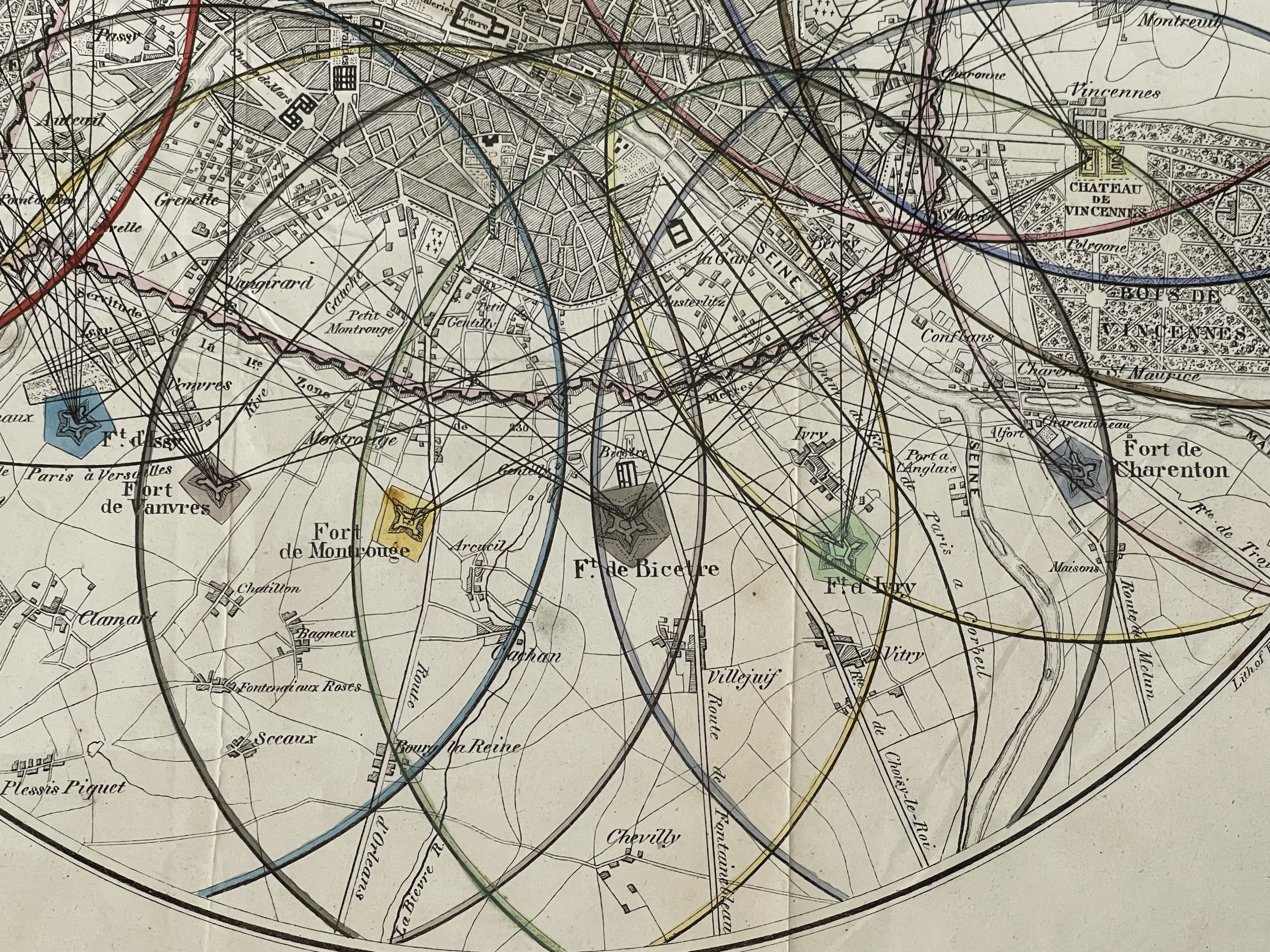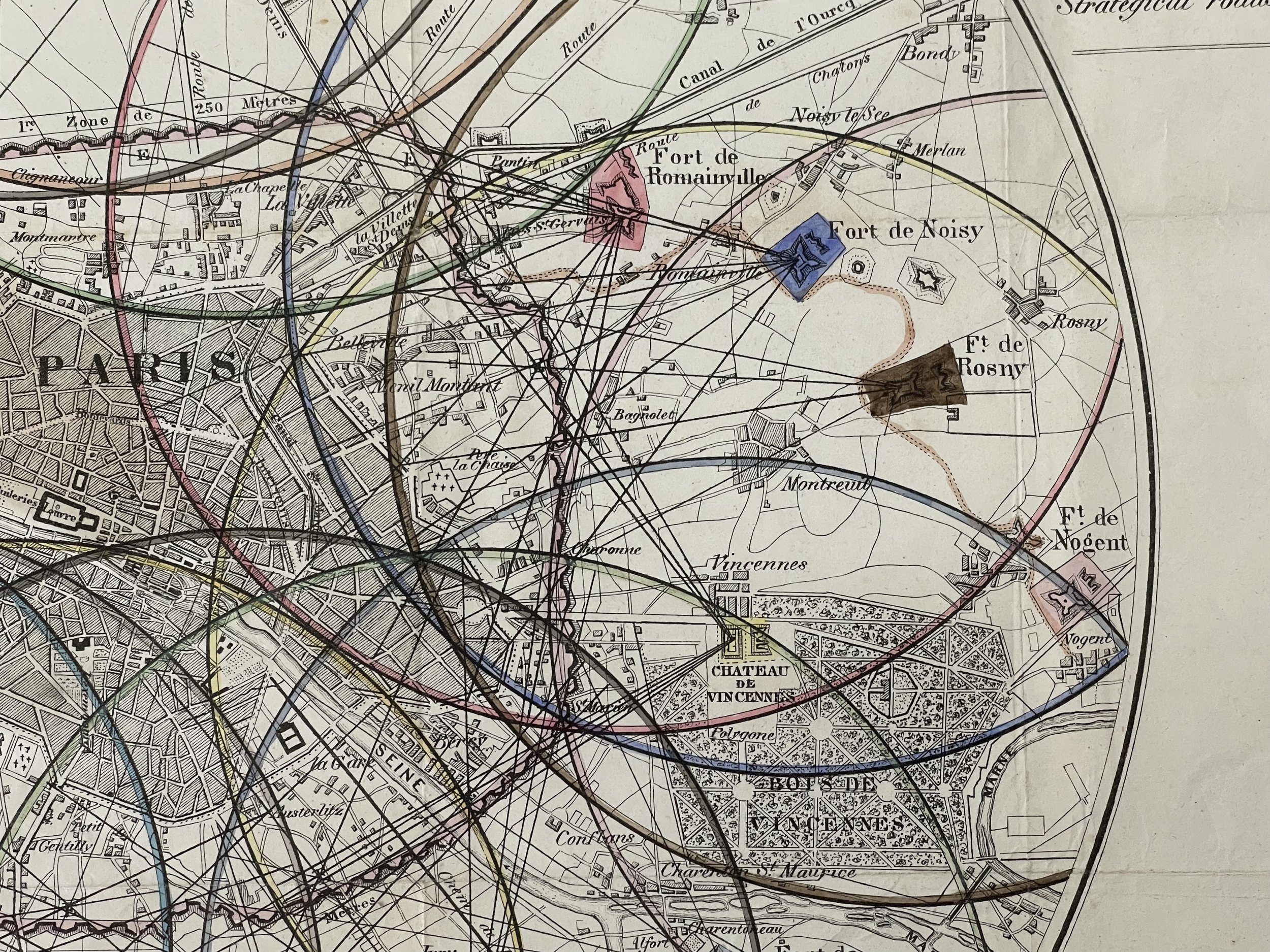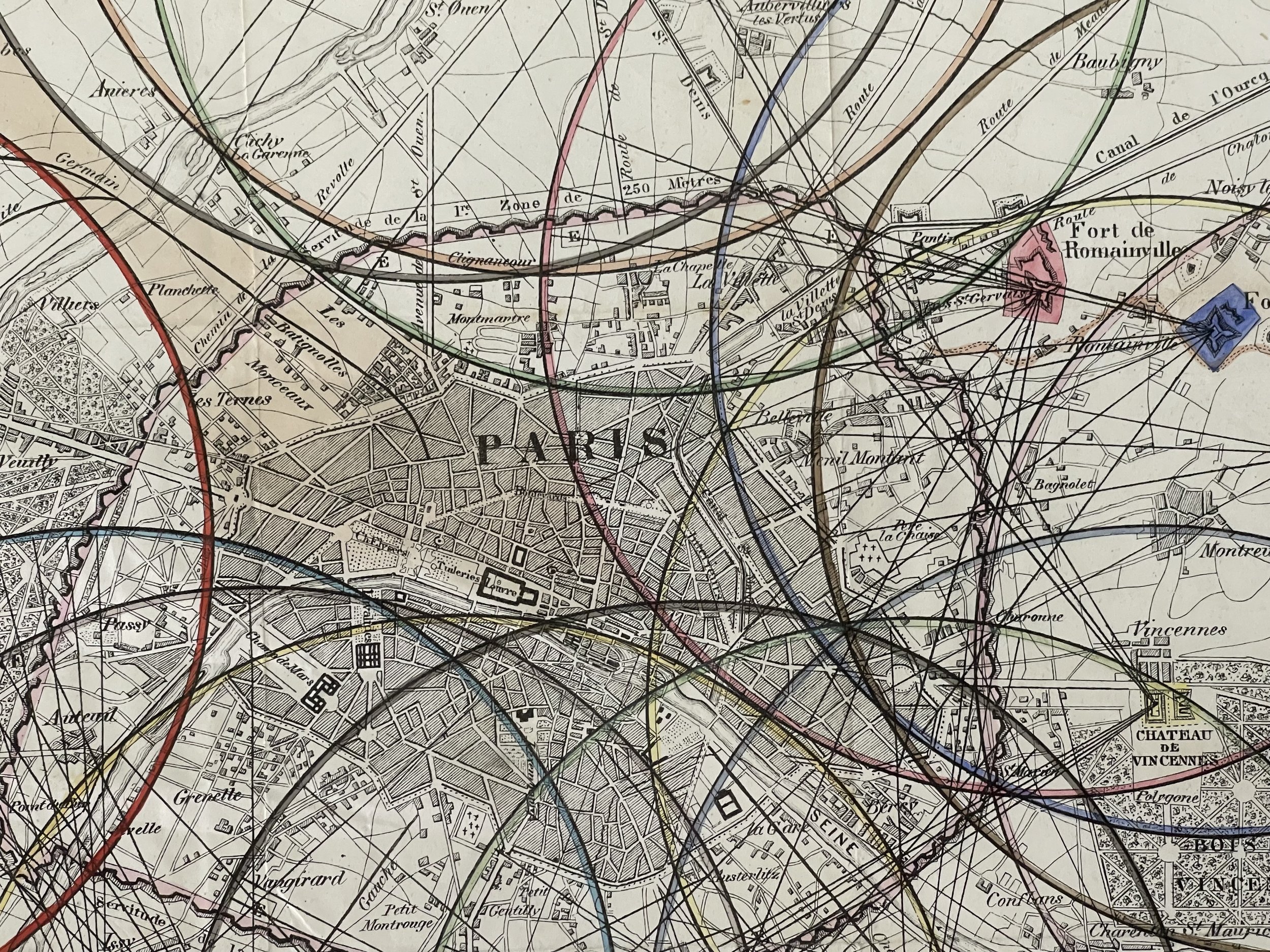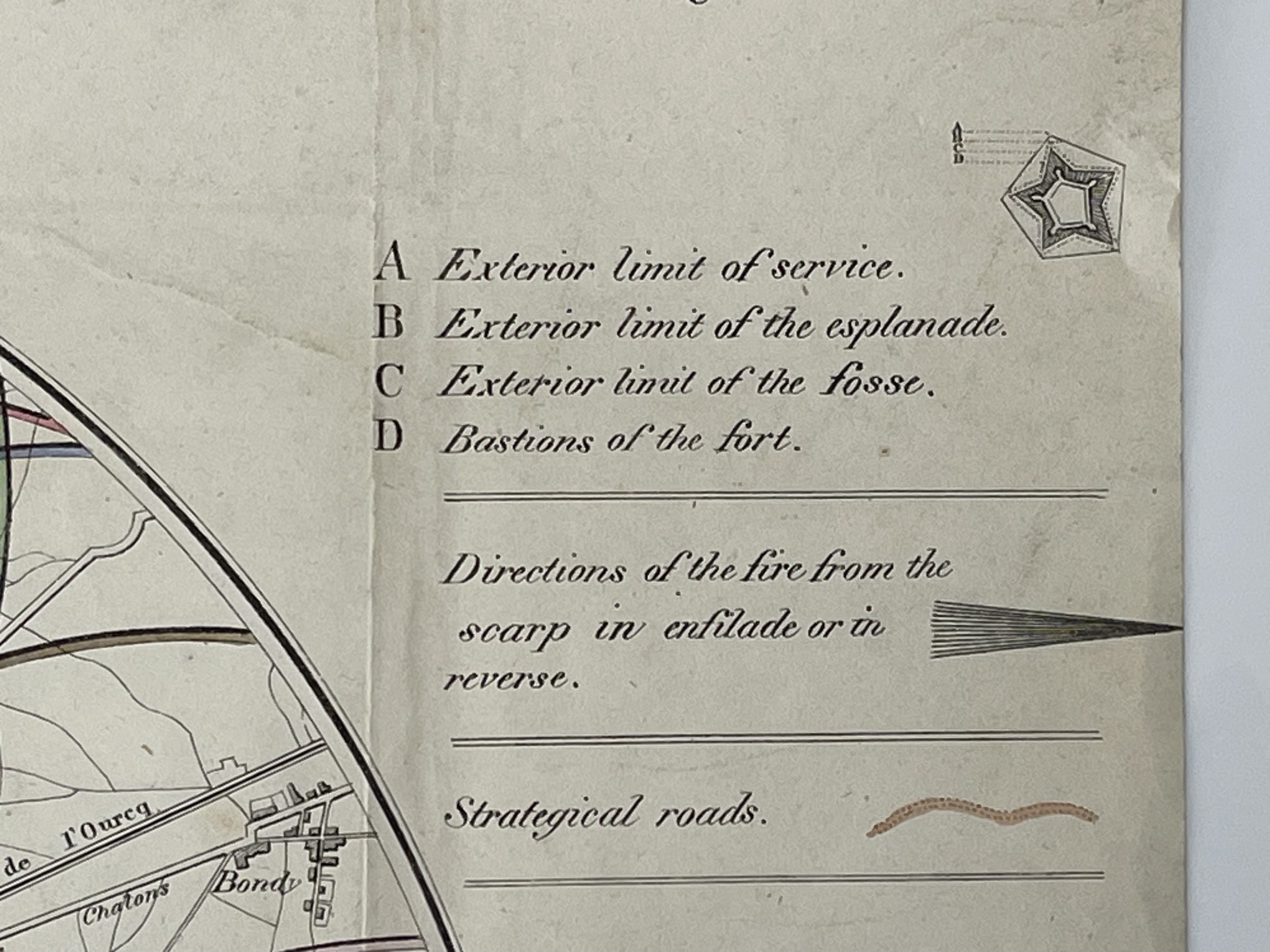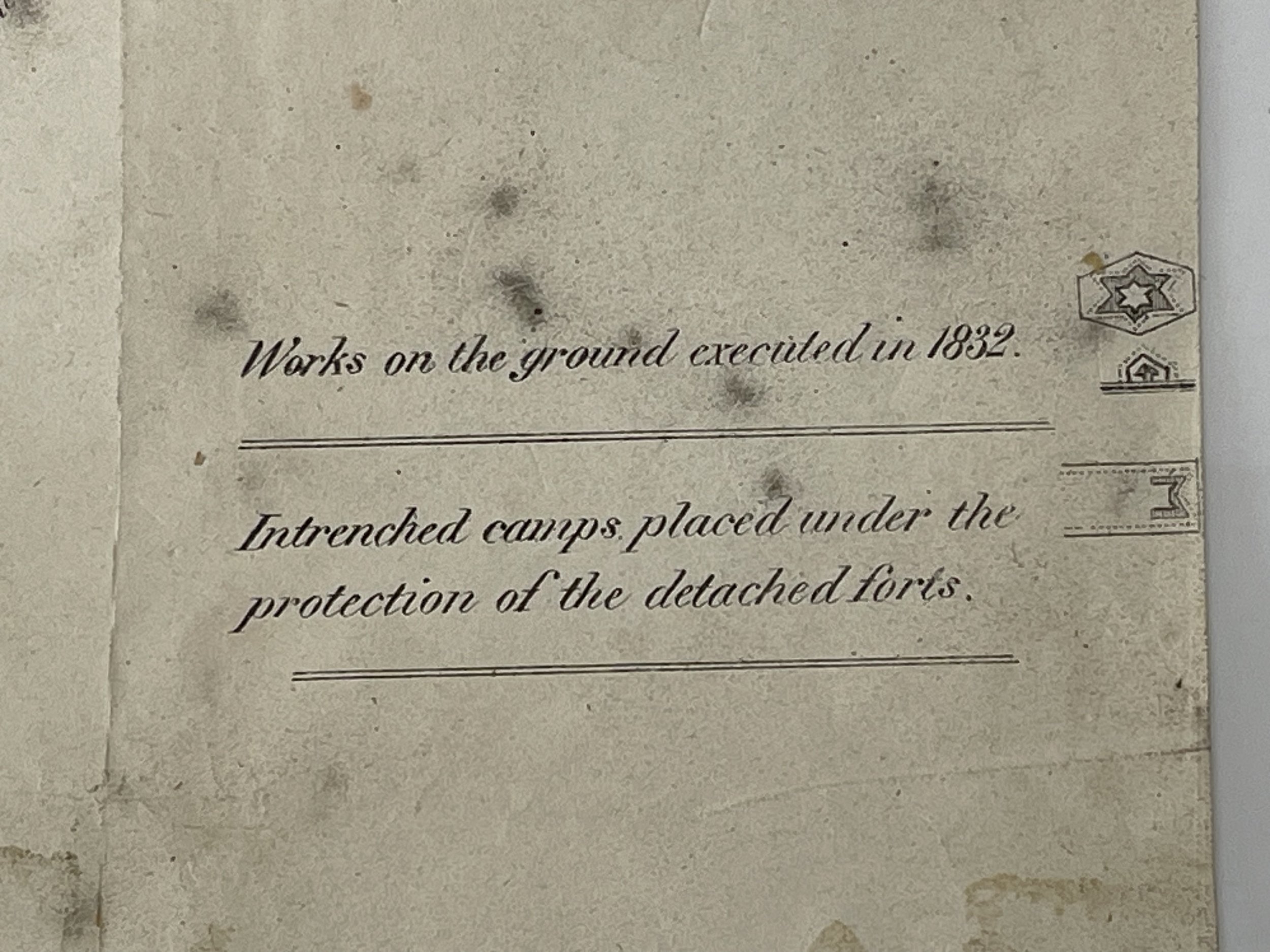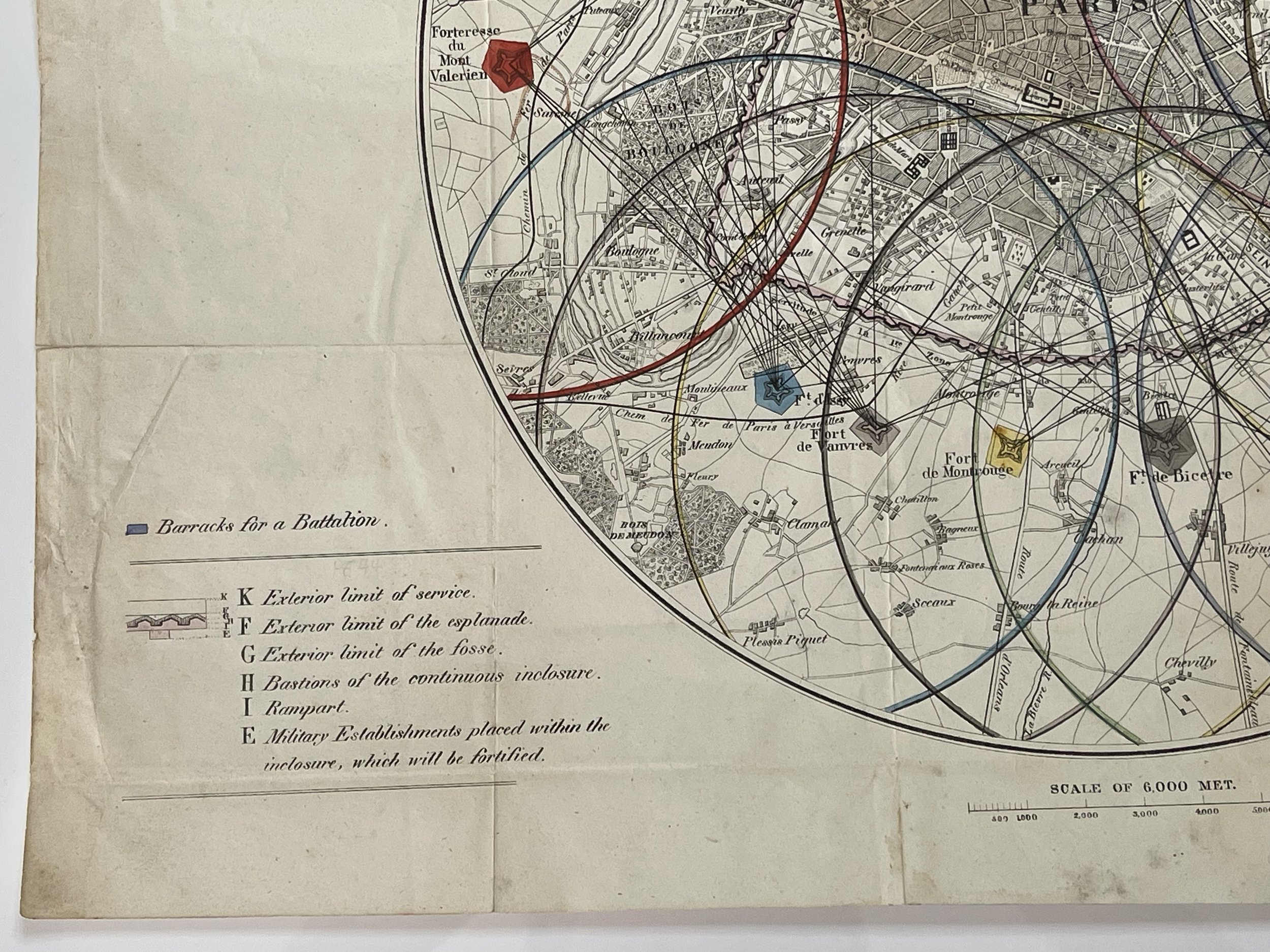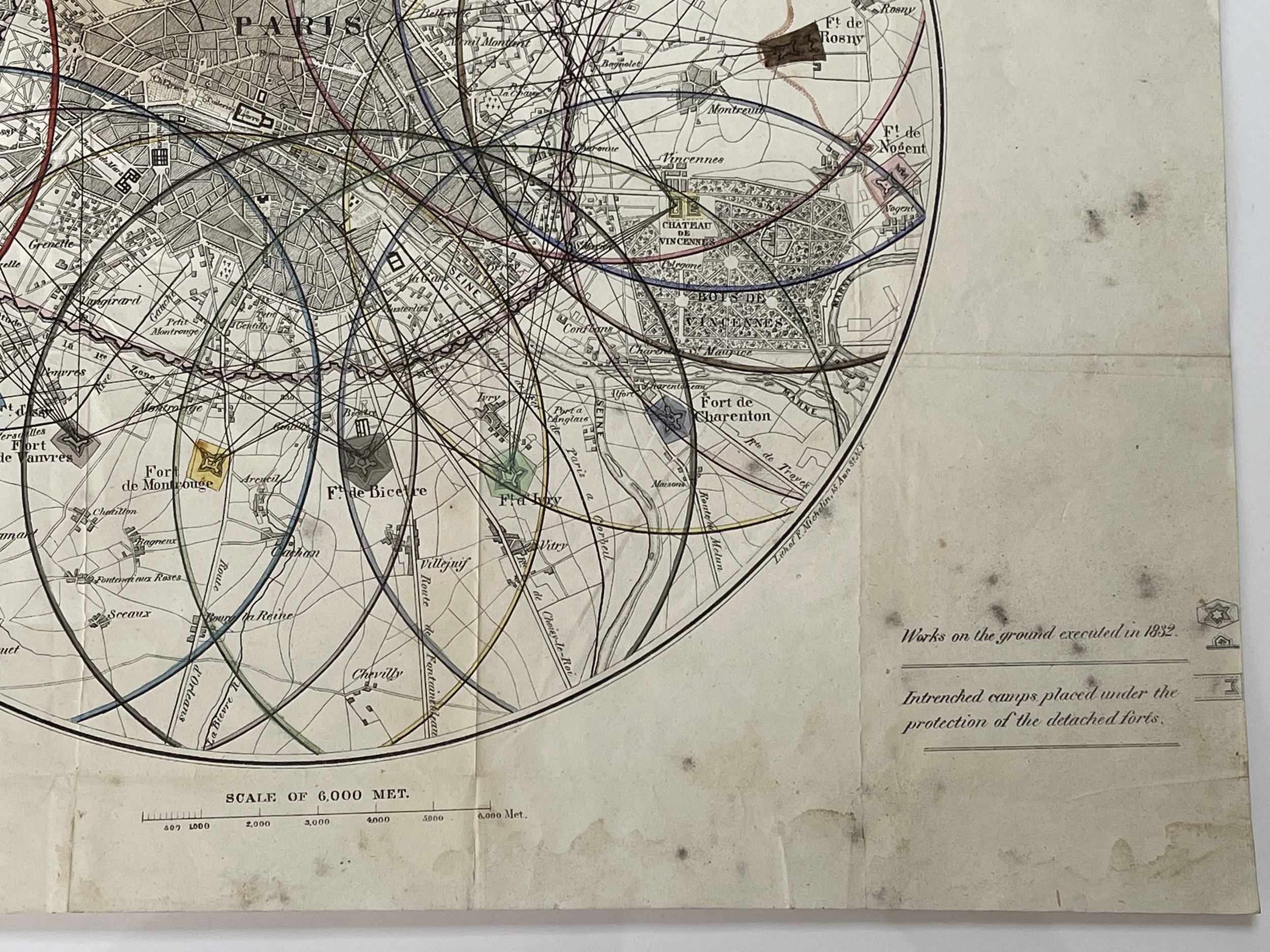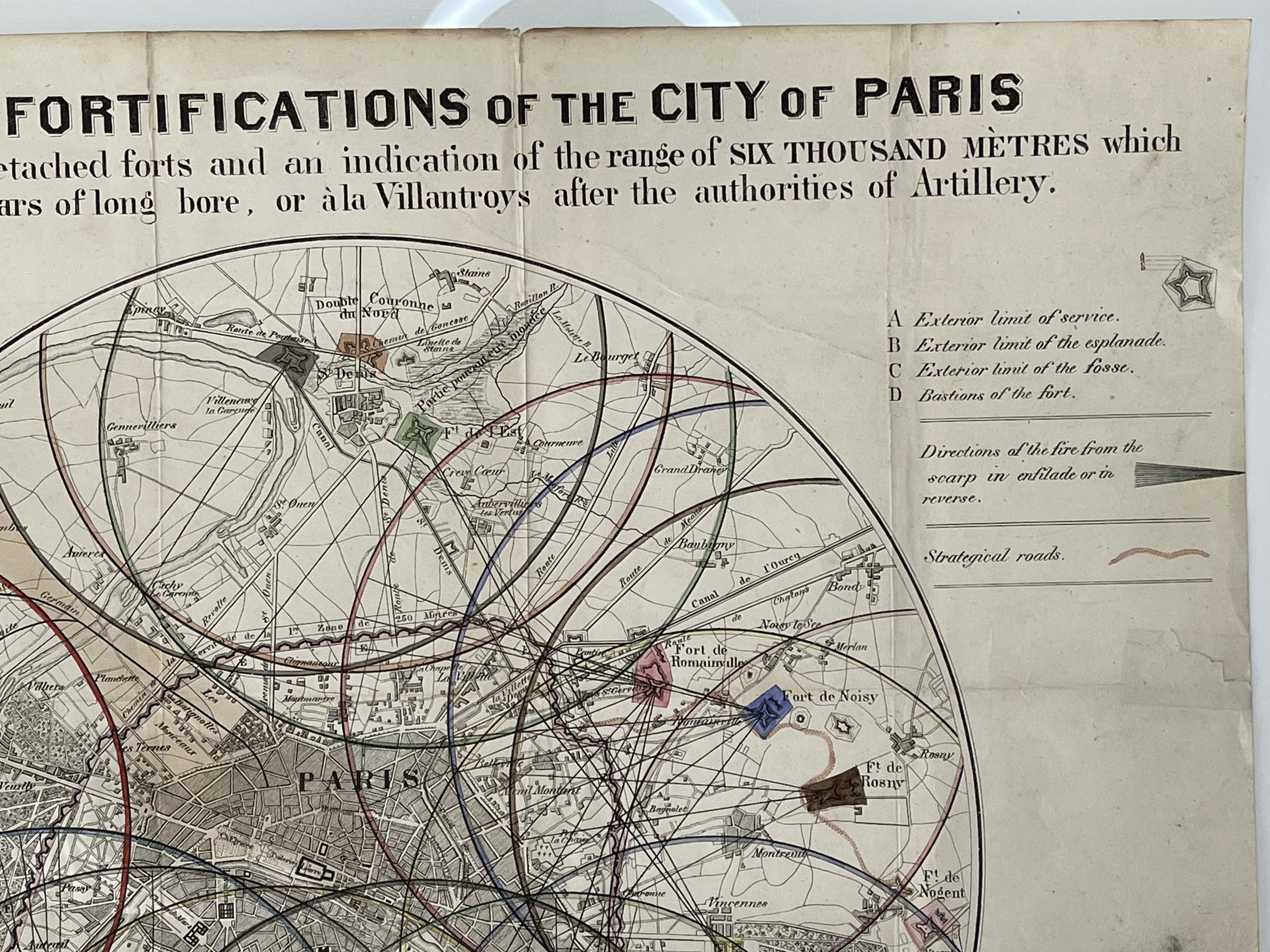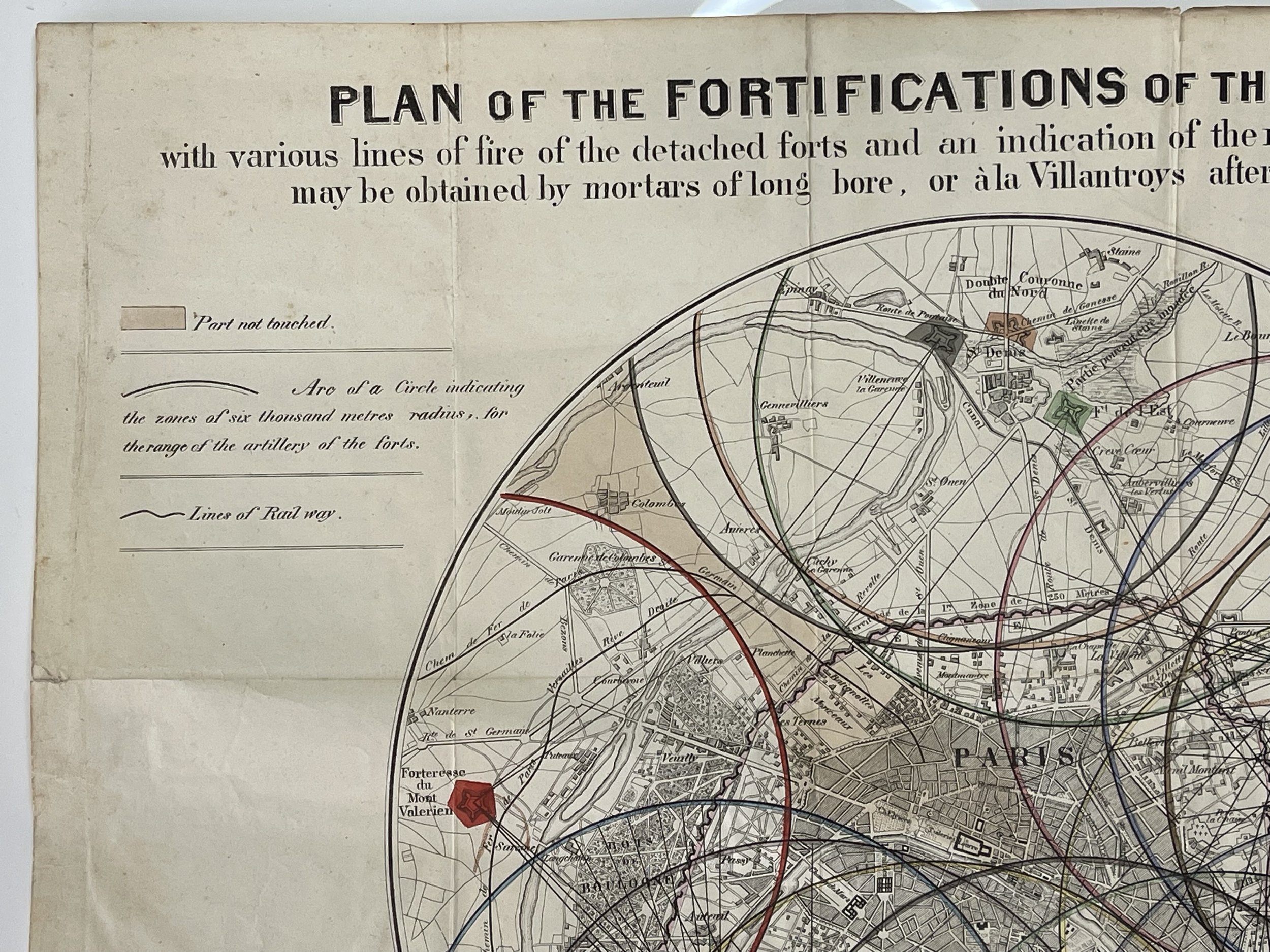Fortifications of the City of Paris FRANCE - Fortresses of Paris - John Price Durbin - 1844
Beautiful and unusual Plan of the Fortifications of the City of Paris with various lines of fire of the detached forts and an indication of the range of Six Thousand Metres which may be obtained by mortars of long bore, or a la Villantroys after the authorities of Artillery.
Harper & Brothers - Published New York 1844 - 17.5 x 14.5 inches.
From the Observations in Europe : principally in France and Great Britain (vol. 1), by John Price. Durbin.
Created by Durbin, John P. (John Price), 1800-1876.
John Price Durbin (October 10, 1800 - October 18, 1876) was an American Methodist clergyman and educator who served as Chaplain of the United States Senate from 1831 to 1832 and president of Dickinson College from 1833 to 1844.
Durbin was born on October 10, 1800, in Paris, Kentucky, to Elizabeth "Betsy" Nunn and Hozier Durbin; he was the oldest of their five sons. While he was still young, his father died, and he went to work for a cabinetmaker. He continued in this trade until his religious conversion at age 18. Durbin studied Latin, Greek and English grammar with tutors.
Licensed to preach by the Methodist church, Durbin went to Ohio in 1819 to begin his ministry. His first church was in Hamilton, Ohio (1821); he entered classes at Miami University while serving there. After another relocation, Durbin continued his college education at Cincinnati College, from which he earned a bachelor's degree and a Master of Arts degree (1825). He was appointed professor of languages at Augusta College in Kentucky. Durbin served as president of Dickinson College in Carlisle, Pennsylvania, from 1833 to 1844.
In 1829, while teaching at Augusta College, his colleagues nominated him as Chaplain of the Senate. His nomination ended in a tie in the Senate, and Vice-President John C. Calhoun voted for another chaplain who was from the church his mother attended. Durbin was reconsidered as Chaplain of the Senate in 1831 and this time won the vote. He had not solicited the position and had been offered a position as professor of natural science at Wesleyan University in Middletown, Connecticut, but declined it so as to accept the position of Chaplain of the Senate. Thereafter, he was editor of the Christian Advocate (1832). In 1833, Dickinson College became part of the Baltimore Conference of the Methodist Church; Durbin was called to be the new president, serving until 1844.
Following retirement from the college, Durbin served Union Methodist Church in Philadelphia. In 1850 he became secretary of the Missionary Society, serving until 1872, when ill health led to his retirement. His several tours of Europe and the Middle East led to well-received books which he authored. Durbin died in New York City on October 18, 1876. He was interred in Laurel Hill Cemetery, Philadelphia.
The author conducts a detailed examination of the Paris fortifications in the mid-19th century, with a particular focus on their interesting layout. Through an analysis of mortar ranges at around 15 strategic positions, it is determined that the only unprotected area near Paris is in a straight line between the city and London, passing through the Colombes region.
Curiously, the map was released shortly after the London Straits Convention, which coincided with the period of cooperative relations between Britain and France known as the Entente Cordiale. This ended with the rise to power of Louis-Napoleon Bonaparte in 1848.
The map features a comprehensive overlay of mortar range on a plan of Paris, highlighting its fortified walls, roads, and significant structures, both military and civilian. It was published towards the end of the French July Monarchy, under the rule of King Louis Philippe I from 1830 until 1848. This marked the end of the Bourbon Restoration, which began when conservative King Charles X was overthrown by the July Revolution of 1830.
Louis Philippe, a member of the more liberal Orleans branch of the House of Bourbon, positioned himself as the "King of the French" rather than the traditional "King of France", emphasizing the popular origins of his reign. He promised a moderate approach, avoiding the extremities of both the conservative supporters of Charles X and the radical left.
The dominant forces during the July Monarchy were the wealthy bourgeoisie and former Napoleonic officials. Policies tended to be conservative, particularly during the reign of François Guizot (1840-1848). The king also prioritized a friendly relationship with the United Kingdom and encouraged colonial expansion, including the conquest of Algeria. However, by 1848, the popularity of the king had significantly declined and the monarchy was overthrown, aligning with a wave of revolutionary movements across Europe.
A few small tears and abrasions to the border outside of the engraving. A little grubby as it has been thumbed over the years. A rare and collectable item. Pricing and grading commensurate.
Beautiful and unusual Plan of the Fortifications of the City of Paris with various lines of fire of the detached forts and an indication of the range of Six Thousand Metres which may be obtained by mortars of long bore, or a la Villantroys after the authorities of Artillery.
Harper & Brothers - Published New York 1844 - 17.5 x 14.5 inches.
From the Observations in Europe : principally in France and Great Britain (vol. 1), by John Price. Durbin.
Created by Durbin, John P. (John Price), 1800-1876.
John Price Durbin (October 10, 1800 - October 18, 1876) was an American Methodist clergyman and educator who served as Chaplain of the United States Senate from 1831 to 1832 and president of Dickinson College from 1833 to 1844.
Durbin was born on October 10, 1800, in Paris, Kentucky, to Elizabeth "Betsy" Nunn and Hozier Durbin; he was the oldest of their five sons. While he was still young, his father died, and he went to work for a cabinetmaker. He continued in this trade until his religious conversion at age 18. Durbin studied Latin, Greek and English grammar with tutors.
Licensed to preach by the Methodist church, Durbin went to Ohio in 1819 to begin his ministry. His first church was in Hamilton, Ohio (1821); he entered classes at Miami University while serving there. After another relocation, Durbin continued his college education at Cincinnati College, from which he earned a bachelor's degree and a Master of Arts degree (1825). He was appointed professor of languages at Augusta College in Kentucky. Durbin served as president of Dickinson College in Carlisle, Pennsylvania, from 1833 to 1844.
In 1829, while teaching at Augusta College, his colleagues nominated him as Chaplain of the Senate. His nomination ended in a tie in the Senate, and Vice-President John C. Calhoun voted for another chaplain who was from the church his mother attended. Durbin was reconsidered as Chaplain of the Senate in 1831 and this time won the vote. He had not solicited the position and had been offered a position as professor of natural science at Wesleyan University in Middletown, Connecticut, but declined it so as to accept the position of Chaplain of the Senate. Thereafter, he was editor of the Christian Advocate (1832). In 1833, Dickinson College became part of the Baltimore Conference of the Methodist Church; Durbin was called to be the new president, serving until 1844.
Following retirement from the college, Durbin served Union Methodist Church in Philadelphia. In 1850 he became secretary of the Missionary Society, serving until 1872, when ill health led to his retirement. His several tours of Europe and the Middle East led to well-received books which he authored. Durbin died in New York City on October 18, 1876. He was interred in Laurel Hill Cemetery, Philadelphia.
The author conducts a detailed examination of the Paris fortifications in the mid-19th century, with a particular focus on their interesting layout. Through an analysis of mortar ranges at around 15 strategic positions, it is determined that the only unprotected area near Paris is in a straight line between the city and London, passing through the Colombes region.
Curiously, the map was released shortly after the London Straits Convention, which coincided with the period of cooperative relations between Britain and France known as the Entente Cordiale. This ended with the rise to power of Louis-Napoleon Bonaparte in 1848.
The map features a comprehensive overlay of mortar range on a plan of Paris, highlighting its fortified walls, roads, and significant structures, both military and civilian. It was published towards the end of the French July Monarchy, under the rule of King Louis Philippe I from 1830 until 1848. This marked the end of the Bourbon Restoration, which began when conservative King Charles X was overthrown by the July Revolution of 1830.
Louis Philippe, a member of the more liberal Orleans branch of the House of Bourbon, positioned himself as the "King of the French" rather than the traditional "King of France", emphasizing the popular origins of his reign. He promised a moderate approach, avoiding the extremities of both the conservative supporters of Charles X and the radical left.
The dominant forces during the July Monarchy were the wealthy bourgeoisie and former Napoleonic officials. Policies tended to be conservative, particularly during the reign of François Guizot (1840-1848). The king also prioritized a friendly relationship with the United Kingdom and encouraged colonial expansion, including the conquest of Algeria. However, by 1848, the popularity of the king had significantly declined and the monarchy was overthrown, aligning with a wave of revolutionary movements across Europe.
A few small tears and abrasions to the border outside of the engraving. A little grubby as it has been thumbed over the years. A rare and collectable item. Pricing and grading commensurate.
Beautiful and unusual Plan of the Fortifications of the City of Paris with various lines of fire of the detached forts and an indication of the range of Six Thousand Metres which may be obtained by mortars of long bore, or a la Villantroys after the authorities of Artillery.
Harper & Brothers - Published New York 1844 - 17.5 x 14.5 inches.
From the Observations in Europe : principally in France and Great Britain (vol. 1), by John Price. Durbin.
Created by Durbin, John P. (John Price), 1800-1876.
John Price Durbin (October 10, 1800 - October 18, 1876) was an American Methodist clergyman and educator who served as Chaplain of the United States Senate from 1831 to 1832 and president of Dickinson College from 1833 to 1844.
Durbin was born on October 10, 1800, in Paris, Kentucky, to Elizabeth "Betsy" Nunn and Hozier Durbin; he was the oldest of their five sons. While he was still young, his father died, and he went to work for a cabinetmaker. He continued in this trade until his religious conversion at age 18. Durbin studied Latin, Greek and English grammar with tutors.
Licensed to preach by the Methodist church, Durbin went to Ohio in 1819 to begin his ministry. His first church was in Hamilton, Ohio (1821); he entered classes at Miami University while serving there. After another relocation, Durbin continued his college education at Cincinnati College, from which he earned a bachelor's degree and a Master of Arts degree (1825). He was appointed professor of languages at Augusta College in Kentucky. Durbin served as president of Dickinson College in Carlisle, Pennsylvania, from 1833 to 1844.
In 1829, while teaching at Augusta College, his colleagues nominated him as Chaplain of the Senate. His nomination ended in a tie in the Senate, and Vice-President John C. Calhoun voted for another chaplain who was from the church his mother attended. Durbin was reconsidered as Chaplain of the Senate in 1831 and this time won the vote. He had not solicited the position and had been offered a position as professor of natural science at Wesleyan University in Middletown, Connecticut, but declined it so as to accept the position of Chaplain of the Senate. Thereafter, he was editor of the Christian Advocate (1832). In 1833, Dickinson College became part of the Baltimore Conference of the Methodist Church; Durbin was called to be the new president, serving until 1844.
Following retirement from the college, Durbin served Union Methodist Church in Philadelphia. In 1850 he became secretary of the Missionary Society, serving until 1872, when ill health led to his retirement. His several tours of Europe and the Middle East led to well-received books which he authored. Durbin died in New York City on October 18, 1876. He was interred in Laurel Hill Cemetery, Philadelphia.
The author conducts a detailed examination of the Paris fortifications in the mid-19th century, with a particular focus on their interesting layout. Through an analysis of mortar ranges at around 15 strategic positions, it is determined that the only unprotected area near Paris is in a straight line between the city and London, passing through the Colombes region.
Curiously, the map was released shortly after the London Straits Convention, which coincided with the period of cooperative relations between Britain and France known as the Entente Cordiale. This ended with the rise to power of Louis-Napoleon Bonaparte in 1848.
The map features a comprehensive overlay of mortar range on a plan of Paris, highlighting its fortified walls, roads, and significant structures, both military and civilian. It was published towards the end of the French July Monarchy, under the rule of King Louis Philippe I from 1830 until 1848. This marked the end of the Bourbon Restoration, which began when conservative King Charles X was overthrown by the July Revolution of 1830.
Louis Philippe, a member of the more liberal Orleans branch of the House of Bourbon, positioned himself as the "King of the French" rather than the traditional "King of France", emphasizing the popular origins of his reign. He promised a moderate approach, avoiding the extremities of both the conservative supporters of Charles X and the radical left.
The dominant forces during the July Monarchy were the wealthy bourgeoisie and former Napoleonic officials. Policies tended to be conservative, particularly during the reign of François Guizot (1840-1848). The king also prioritized a friendly relationship with the United Kingdom and encouraged colonial expansion, including the conquest of Algeria. However, by 1848, the popularity of the king had significantly declined and the monarchy was overthrown, aligning with a wave of revolutionary movements across Europe.
A few small tears and abrasions to the border outside of the engraving. A little grubby as it has been thumbed over the years. A rare and collectable item. Pricing and grading commensurate.
Code : A1073
Cartographer : Cartographer / Engraver / Publisher: John Price. Durbin / Harper & Brothers
Date : Publication Place / Date - Circa 1844
Size : Sheet size: approx 17.5 x 14.5 Inches
Availability : Available
Type - Genuine - Antique
Grading A-
Where Applicable - Folds as issued. Light box photo shows the folio leaf centre margin hinge ‘glue’, this is not visible otherwise.
Tracked postage, in casement. Please contact me for postal quotation outside of the UK.
